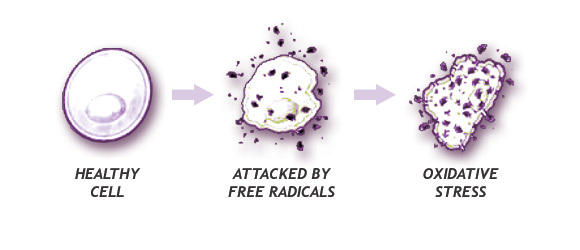If I make it past the age of 40 without my heart or brain exploding (unlike my favorite author, Thomas Wolfe, who died at 37 and when the doctors trephined his skull a burst of pressurized cranial fluid spurted across the room) I look forward to the day when my skin starts to wrinkle. Like a young boy admiring the hair follicles in his armpits blossom, I will observe the decaying and folding of my epidermis with a glowing satisfaction and a quiet pride. Why yearn to re-live the smooth-faced glories and taut energies of youth? I can go back to those fickle, ungracious, boisterous days in my sagging, thinning, white-haired head.
Interesting enough, a biopsy of a wrinkle reveals no obvious signs that it is any different from the rest of your skin. So why am I becoming a bulldog?
The development of wrinkles is a multi-factorial process of intrinsic and extrinsic aging.
Intrinsically, your skin is producing 1% less collagen each year after the age of 20. Collagen is the most abundant protein in the human body (30%). If your body is a house, preferably a brick house, then collagen would be the scaffolding. Less collagen means your skin is thinner and more fragile.
As we hurtle towards death, our bodies also produce less elastin. Elastin is a protein found in connective tissue which allows our bodies to resume their shapes after stretching or contracting. Elastin is like a rubber band:
But if you strain the springiness of the elastin too much/too frequently, the skin has difficulty springing back, and you develop grooves in your skin. This happens with repeated facial expressions such as squinting and laughing which is why young people can develop crows feet and other various lines. For me, I’ve already developed lines on my forehead from spending the majority of the last 26 years lifting my eyebrows in a questioning glance then furrowing my eyebrows in profound thought.
The two proteins mentioned above work together to keep our skin firm and resistant. Collage is the strength upon which the outer layer of the skin is anchored (located in the lower layers of the dermis). Elastin is responsible for the softness and elasticity of the skin (located in the middle layer of the dermis).
The third, crucial component of our skin are glucosaminoglycans (GMCs). This component is the final piece of our skin’s extracellular matrix…
So close.
GMCs are polysaccharides or amino sugars. Together with water, GMCs create a fluid which fills the space between the collagen and the elastin fibers. GMCs are water-binding substances which provide a turgidity or a firmness to our skin. This is one of the reasons why drinking lots of water can promote smooth, healthy skin and make your cheek feel like a baby’s fat ass.
As we plummet towards the grave, our sweat and oil glands also break down. The outermost layer of our skin is covered by an oil called sebum, which lubricates and protects our skin. The sebum is our natural raincoat. It is when sebum is removed from our skin during a prolonged submersion in water that our fingertips and feet become all pruny. Once the oil is gone, water becomes waterlogged in the epidermis. Why doesn’t the rest of our skin get pruny? Because the thicker layer on our feet and hands contain more dead skin cells than any other part of our body. Dead skin cells pull more aggressively on the lower layers and swell more easily than living cells. Unlike a raisin, our skin doesn’t get pruny because of shrinking, but because of expanding.
Extrinsically, our skin ages because of the sun and environmental damage (smoking, pollution). According to a study by the Journal of Clinical, Cosmetic, and Investigational Dermatology,
damage caused by UV rays accounts for at least 80% of skin aging.
UV rays penetrate our skin and damage the collagen and elastin fibers. In response to this damage, our body produces metalloproteinasas. Some of these enzymes break down the collagen further and the result is an uneven formation (matrix) of disorganized collagen fibers called solar scars. Repeat this abnormal skin rebuilding process over decades and you get wrinkles dinkles.
In addition, during the UVA attack break-down process, oxidants or free radicals are produced. Excessive amounts of these oxidants will damage our cells (they steal energy from them) and can even alter their genetic material.

If you’ve read my post on “Fred and the Trap house” you will remember that I asked the question: “why does black not crack?”…because Fred is 47 but doesn’t have one wrinkle. Answer: Black skin produces more melanin than white skin, which fights against (absorbs and disseminates) UV rays and prevents DNA damage. An albino is someone whose body doesn’t produce any melanin. Studies also show that black skin produces larger amounts of sebum.
Smoking also causes excess oxidants. In a study of identical twins, the smoker was found to have thinner skin (by as much as 40%). And in another study of women, the smokers were found to have less secretions of Vitamin E in their skin, and Vitamin E is believed to be an antioxidant.
Every year Americans spend 12 billion on cosmetic procedures to hide the signs of aging.
Every year Americans spend millions of hours staring at mirrors worrying about Father Time ploughing creases in their face.
Not for me.
Subscribe here:
Sources:
http://www.scientificamerican.
http://www.nytimes.com/health/
http://mobile.abc.net.au/news/
http://www.blerdnation.com/
http://www.mayoclinic.org/
http://m.kidshealth.org/en/
http://www.annmariegianni.com/
http://blackgirlnerds.com/
http://wonderopolis.org/

